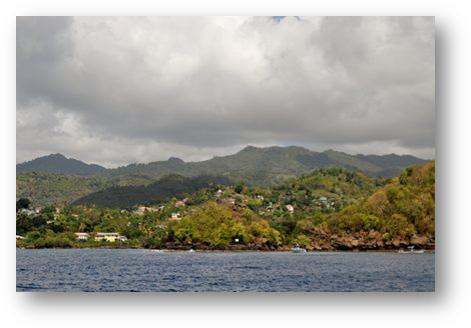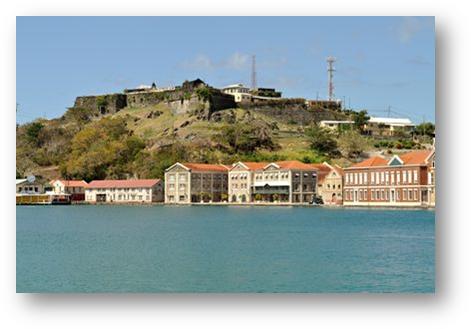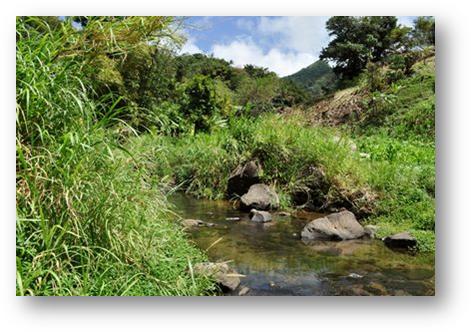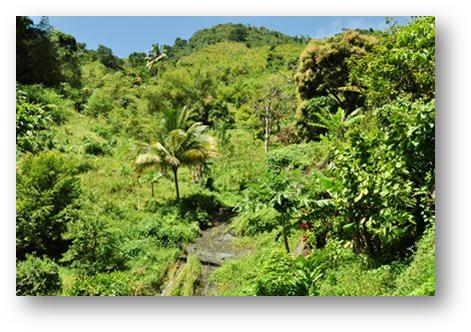Grenada

Position: 12:02.658N 61:44.944W Date: Thursday 21st February 2013 We left Tyrell Bay on Wednesday 20th February and had a good sail down to Grenada. Again the sun shone and the wind blew vigorously from behind us. Between Carriacou and the north coast of Grenada there are a number of small islands with some strong currents around and between them and this helps to build a fairly rough sea. In addition there is another interesting feature under the waves. An active volcano, called ‘Kick ‘em Jenny’ is situated in an almost direct line between Carriacou & Grenada lying about 190 metres below the surface. It last erupted in 1988 & 1989 so it is prudent to avoid sailing directly over the top of it. According to Patrick Leigh Fermor in his travel book ‘The Travellers Tree’ the name is a corruption of ‘Caye qu’on gêne’ (the reef that hinders you). Fortunately as we sailed close to her, Jenny kept her legs crossed. As we approached Grenada we were once again overwhelmed by the sheer abundant greenery of the land.
The seas calmed as we entered the lee of the land and we cruised leisurely down the west coast to a bay called Grand Mal. We spent the night there, and it rained a lot. There was something about the name of the place that did not encourage us to linger so after an unhurried morning we upped anchor and travelled a couple more miles down the coast to the capital of the island, St George, where we checked into a rather swanky marina run by Camper & Nicholson. In the afternoon we took a stroll around the waterfront. The town is built around what would appear to be a sunken volcanic crater, and unlike the places we have seen so far a proper quay has been built around the entire waterfront. To landward of the quay is a narrow road and the buildings come right down to the roadside. There are no palm trees, sea grape or manchineel growing on a sandy strip between the houses and the sea. The buildings are all built of stone or brick, some with roofs made from overlapping brick tiles, referred to in the guide books as a ‘fishscale’ pattern. Again there are very few of the wooden clapper board houses that we have seen just about everywhere else so far. Some of the buildings are quite grand and have recently been renovated. Here and there are dotted a few derelicts with collapsed roofs. The water is populated by a small fishing fleet and a few ferries. I couldn’t help thinking of Porto Vecchio in Portoferraio on the island of Elba in the Mediterranean, which has a quite similar aspect. However on Elba the waterfront buildings have almost all been converted to chic cafés, ice cream parlours and restaurants catering to large crowds of holidaying Italians. Here in St George’s the buildings are used for more prosaic purposes, being warehouses, trading businesses, medical imaging services, government offices and the like. Behind the waterfront the land rises steeply through green slopes populated by many houses and churches to the rim of the ancient crater with a couple of eighteenth century forts, built by the British or the French, peering over the edge trying to make sense of what the 21st century is up to.
On the Friday we hired a car to go exploring. It was a public holiday. The elections had been held a couple of days before and the new government had announced an unscheduled bank holiday to celebrate their success (all 15 seats had been won by the opposition party). I was too relaxed to become concerned when the salesman told me that the car had a flat battery because the previous renters had left the boot open, but it would be OK after we had driven a few miles. We set off down the west coast and soon saw a sign pointing towards Concord Falls, surely too good to miss. The road was very narrow and bendy and had some quite steep inclines but after a short while we arrived at the end of the road where the waterfall was. It was modest in size, but quite beautiful. And all around us was the most stunning verdant scenery. There was a small café and about five or six small stalls selling spices and coral jewellery. We were the only tourists there, which meant that we got to see everything without crowds, but we were also the sole focus of the vendors.
We also got to see nutmeg and dasheen (taro) growing close by.
After about half an hour a couple of busloads of other tourists arrived so we decided to leave. And guess what, the hire car wouldn’t start. The battery was deceased. It was another 90 minutes before the hire car repair man arrived and got the car going again, leaving with us his emergency starting equipment. We drove on for another hour or so but it soon became clear that there was not enough daylight left to continue to drive around the island. We were also very hungry as it being a bank holiday everything was closed. No food shops, no cafés, no restaurants, no garages, nada. So we turned around and drove back to the boat for a very late lunch (about 4:00pm). For some as yet unknown reason an hour or so later my right knee started to swell up so that walking became very stiff and painful. So we cancelled the car for the following day and spent Saturday and Sunday just taking things easy. |












